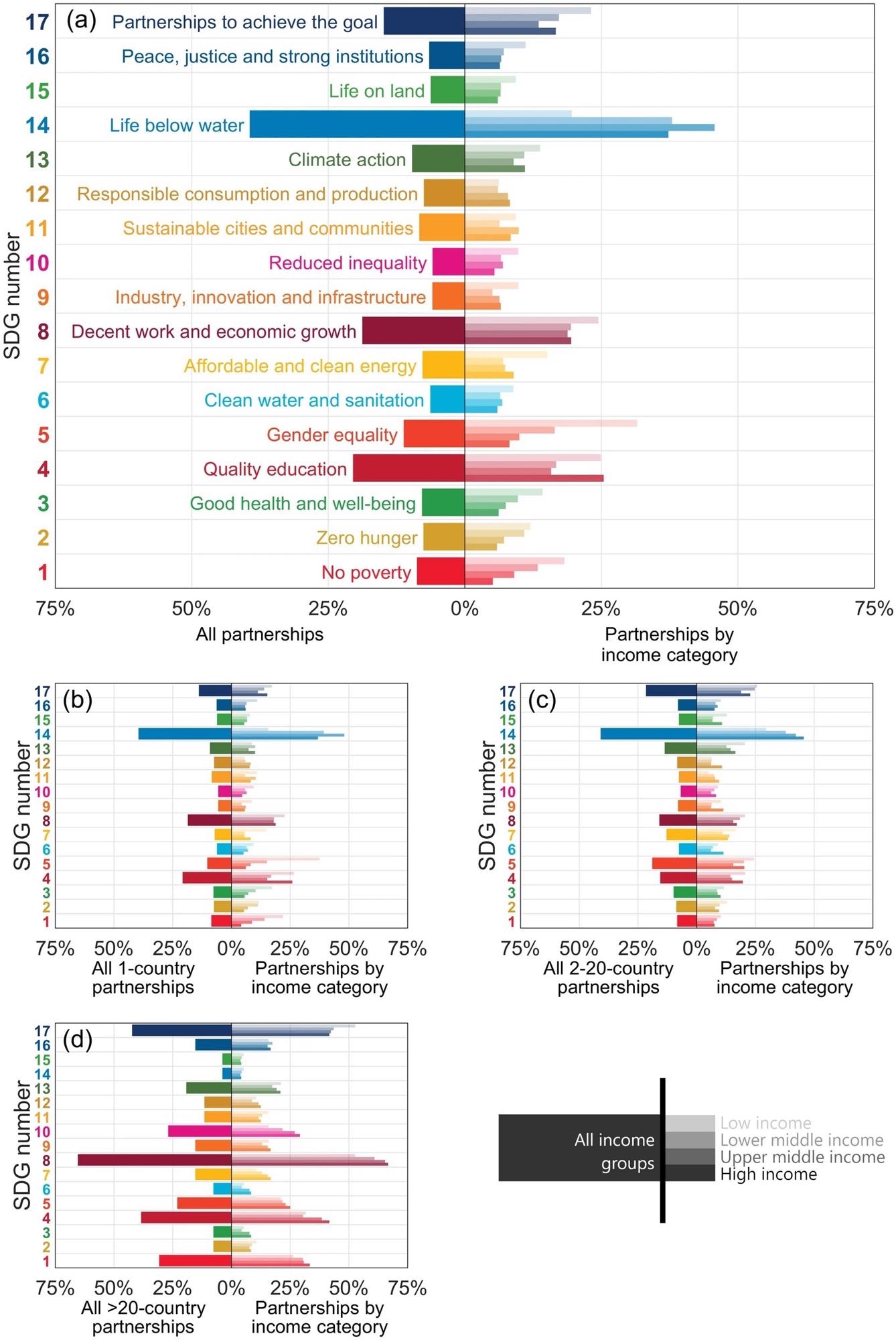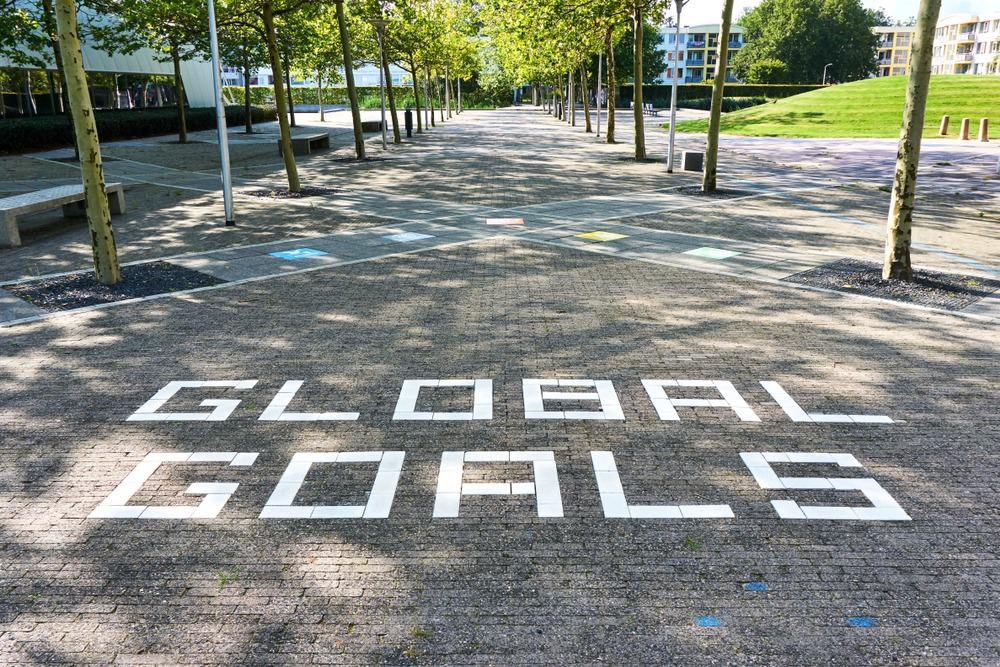.png) Interview conducted by Emily Henderson, B.Sc.Dec 10 2021
Interview conducted by Emily Henderson, B.Sc.Dec 10 2021In this interview, we speak to Associate Professor Malgorzata Blicharska about the Sustainable Development Goals (SDGs) and how they may be creating global inequalities between countries.
Please could you introduce yourself and tell us what provoked your latest research into the sustainable development goals (SDGs)?
I am a senior lecturer in natural resources and sustainable development at Uppsala University in Sweden. I have interdisciplinary expertise, with a background in forestry and ecology, and work within social and political sciences.
I have always been interested in the interplay between the social and natural world, and particularly how the decisions people and institutions take, impact what is happening on the ground. It is quite visible globally that there are large inequalities in who is controlling the environmental agenda and who is experiencing the consequences.
The repercussions for sustainable development are profound – while the aim is to achieve it throughout the world, rich (“Northern”) countries are failing everyone by not addressing the needs of poor (“Southern”) countries.
What are the SDGs and why were they designed?
“Agenda 2030: transforming our world” seeks to achieve 17 Sustainable Development Goals (SDGs) by 2030 and was agreed by all Member States of the United Nations in 2015. It is an ambitious plan to achieve prosperity for the people and the planet, to end poverty and hunger, realize human rights, ensure the protection of our natural resources, and achieve equality.
SDGs are crucial in the face of ongoing climate change, biodiversity decline, and the many development challenges we are facing. The intent of the SDGs is to “leave no one behind” by ensuring sustainable development all over the world.

Image Credit: yukipon/Shutterstock.com
Can you describe how you carried out your latest research into the SDGs? What did you discover?
Together with my colleagues Claudia Teutschbein from Uppsala University in Sweden and Richard Smithers from Ricardo Energy &Environment in the UK, I analyzed multi-stakeholder partnerships recorded on the UN’s SDG Partnerships Platform that aim to implement SDGs globally.
We explored the extent to which partners from Northern and Southern countries are involved in SDG partnerships globally and in different regions of the world. We also analyzed what SDGs these partnerships focus on.
Our research was motivated by the fact that globally there is an important North-South divide in countries' resources, access to data, and scientific capabilities, with the poorest countries having substantially less investment in research and development. This has profound consequences for the development and implementation of policies, particularly on a global scale. We wanted to check if the implementation of the SDGs, through partnerships, is helping to bridge that divide, or if it may rather contribute to it.
We discovered that most partnerships that we analyzed were domestic partnerships, i.e. focused on only one country and that partners from low-income countries participated in fewer partnerships, as compared to partners in all other income categories. This does not reflect the idea promoted by Agenda 2030 of the global partnerships addressing global challenges. It also suggests that low-income countries lack the resources and capacity to get involved in partnerships and, thus, to implement the SDGs.
We also found out that the focus of partnerships differed depending on the income category of the countries involved. Particularly, partners from low-income countries focused more on SDGs about poverty, hunger, health, gender equality, and energy (SDGs 1, 2, 3, 5, and 7) than those involving partners from higher-income countries.
Finally, we found that partnerships with partners from more than one country included North–North country-wise relationships least frequently, relatively few North-South relationships, and mostly South-South relationships, particularly South-South partnerships with partners from countries within the same region. This may suggest an inability to engage in partnerships elsewhere without Northern involvement.

Image Credit: SDG partnerships may perpetuate the global North–South divide
What impact will unequal resource sharing have on countries, especially low-income countries where this will have the most impact?
Unequal distribution of resources limits Southern countries’ abilities to undertake research, shape the global policy agenda and achieve sustainable development through implementing appropriate actions on the ground. Instead, Northern countries design and drive the implementation of policies in Southern countries, that may not be best adjusted to Southern country's needs.
For example, in relation to climate change, Northern countries that are responsible for 80% of global emissions insist on all countries contributing to emissions reductions and motivate Southern countries through directing funding predominantly to mitigation, while what Southern countries need most is to focus on adapting to the changing climate.
Why is it important to ensure all countries regardless of income benefit equally from the SDGs?
This is important for many reasons. From an altruistic and humanitarian perspective, we cannot continue to focus resources and actions in ways that advantage rich Northern countries at the expense of the global South if we wish to achieve a sustainable and just world.
From a practical, self-centered perspective, if Northern countries’ actions continue to compound Southern countries’ vulnerabilities to climate change and loss of biodiversity, then there is an increasingly high risk of transnational impacts that will span the globe and from which no one will be immune. Such spill-over effects may lead to a breakdown in trade, competition for natural resources, regional conflict, mass migration, and spread of disease and invasive species.
What should policymakers, Governments, and funders be doing to ensure the SDGs do not perpetuate inequalities in resources between high and low-income countries?
Most of all, all these actors need to ensure that they understand the divide concerning the implementation of the SDGs and work to overcome it. Specifically, they should give the greatest attention to supporting the needs of low-income countries, as they are least able to implement the SDGs.
North-South partnerships are potentially a good means of promoting sustainable development but only if designed on mutual terms in a non-discriminatory and equitable way, as highlighted by Agenda 2030. They will not succeed if developed from a Northern perspective, according to Northern priorities but need to be responsive to Southern views and needs.

Image Credit: Harry Wedzinga/Shutterstock.com
Do you believe that if funders do not support and encourage partnerships between high and low-income countries we could see more inequalities arise? What impact will this have globally?
Global inequalities have been rising in recent years. This trend will continue to accelerate unless concerted actions are taken by the Northern countries to halt and reverse it. Our continuing wilful neglect may not simply prevent transformation to a just and sustainable world and “leave behind” those who are most vulnerable, it may inevitably lead to transnational impacts from which no one will be immune neither North nor South.
In our globalized world, we are all interconnected, all ultimately reliant upon one another for all our needs. Unless continuing Northern development actively seeks to meet the needs of people across the globe, future generations both South and North will be unable to meet their needs
What are the next steps in your research?
I would like to continue to explore the extent and ramifications of the North-South divide in science and practice related to environmental issues, to highlight how these issues impinge on the development and implementation of international agenda in relation to sustainable development, climate change, and biodiversity, and to help identify possible solutions.
Far too little consideration is given to the divide by Northern academics and policymakers. Currently, together with colleagues from Uppsala University in Sweden and Kyushu University in Japan, we are developing a project to explore how the partnerships for SDGs influence the flow of capital between the global North and the global South.
Where can readers find more information?
About Malgorzata Blicharska
Associate professor Malgorzata Blicharska is a Senior Lecturer in Natural Resources and Sustainable Development in the Department of Earth Sciences at Uppsala University, Sweden.
She has been working with biodiversity policy implementation, individual and organizational learning related to the implementation of new policies and concepts, public participation in environmental decision-making, conservation conflicts, spatial planning for conservation, environmental economics, implementation of Sustainable Development Goals, and North-South divide in science and practice.
Disclaimer: The views expressed here are those of the interviewee and do not necessarily represent the views of AZoM.com Limited (T/A) AZoNetwork, the owner and operator of this website. This disclaimer forms part of the Terms and Conditions of use of this website.